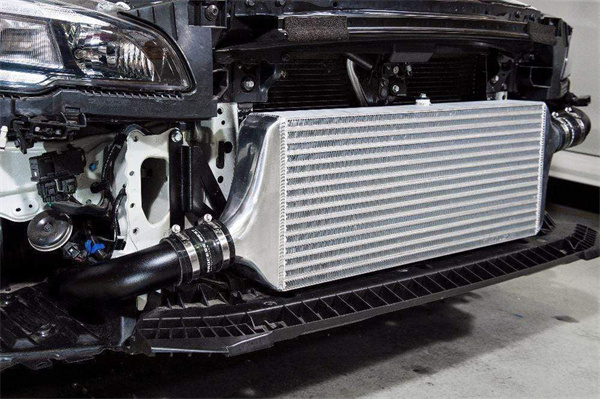Intercoolers found in turbo or supercharged engines, provide much-needed cooling that a single radiator can’t.Intercoolers improve the combustion efficiency of engines fitted with forced induction (either a turbocharger or supercharger) increasing the engines’ power, performance and fuel efficiency.
Turbochargers compress incoming combustion air, which increases its internal energy, but also raises its temperature. Hot air is less dense than cool air, which reduces its combustion efficiency.However, by installing an intercooler between the turbocharger and the engine, incoming compressed air is cooled before it reaches the engine, restoring its density to give optimum combustion performance.
An intercooler acts as a heat exchanger, removing the heat generated during the turbochargers’ compression process. It does this by transferring the heat to another cooling medium, which is usually either air or water.
There are two main types of intercooler, which work in different ways:
Air-cooled (air blast) intercoolers : air to air
In the automotive industry, the increasing demand for more efficient engines, with lower emissions has resulted in many manufacturers developing much smaller capacity, turbocharged engines to help them achieve the desired combination of performance and fuel efficiency.
In most automotive installations, adequate cooling can be provided by an air-cooled intercooler, which works much like a car radiator. Cooler ambient air is drawn to the intercooler by the vehicle’s forward motion and then travels through cooling fins, transferring heat from the turbocharged air, to the cooler ambient air.
Water-cooled intercoolers: air to water
Where air cooling isn’t suitable, water-cooled intercoolers are an extremely efficient solution. Usually based on a ‘shell and tube’ heat exchanger design, cooling water flows through the central tube ‘core’ of the unit, whilst the hot charge air flows around the exterior of the tubes, transferring its heat as it travels through the heat exchanger’s inner ‘shell’. Once cooled, the air exits the intercooler and is piped to the engine’s combustion chamber.
This is where a performance intercooler comes in, which helps absorb and remove that excess heat. This in turn allows the engine to produce more power.
Installation location of the intercooler:
In generally, air-to-air intercoolers can be located anywhere between the turbo and the engine, they are most effective where there is better airflow, and are usually placed at front of the vehicle, behind the grille.
In some vehicles, the engine layout prevents this, and the intercooler is placed on top of the engine – but airflow is typically less here, and the intercooler may be impacted by heat from the engine itself. In these cases, additional air ducts or scoops in the bonnet are usually added to improve airflow.
Even though an intercooler is not mandatory for forced induction, it’s always advisable that you install one.
It’s worth mentioning that your experience with installing one of these will differ based on your engine layout.
For cars that have a front mounted engine, the process is quite straightforward. But for mid or rear-engine cars, expect to deal with a more complicated setup.
Post time: Dec-12-2022


